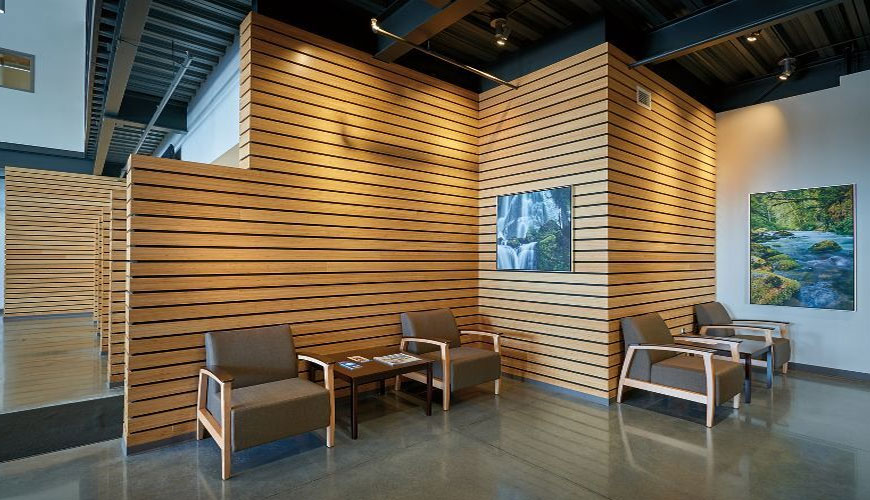

The ISO 12460 standard, developed by the International Standards Organization (ISO), consists of the following subheadings under the main heading "Wood-based panels - Determination of formaldehyde release":

The ISO 12460-1 standard describes a 1 m3 room method for the determination of formaldehyde emission from wood-based panels under defined conditions, in relation to typical real-life conditions. 1 m3 room is the reference method for determining formaldehyde release. The following regional or national test methods are used for factory production control:
For the purposes of this standard,
The ISO 12460-2 standard describes a test method for measuring formaldehyde concentrations in the air from wood products under defined temperature and relative humidity test conditions. Results from this small-scale chamber test method are often used for quality assurance, and the chamber method such as 12460 m1 described in ISO 1-3 is compared or usefully correlated with results from testing larger product samples in larger chamber test methods for wood products. . This standard is based on the standard “ASTM D6007 Standard test method for the determination of airborne formaldehyde concentration from wood products using a small-scale room”.
The ISO 12460-3 standard describes a procedure for the determination of accelerated formaldehyde release from uncoated and coated wood-based panels using the gas analysis method. This procedure is also suitable for testing other materials, eg edgebanding, floor coverings, foams, foils, laminated wood products, veneered wood products, veneered wood products. During this test, a test piece of known surface area is placed in a closed chamber where temperature, humidity, airflow and pressure are controlled according to defined values. The formaldehyde released from the test pieces mixes with the air in the room. This air is constantly drawn from the chamber and passes through gas scrubbing bottles containing water, which absorb the released formaldehyde. At the end of the test, the formaldehyde concentration is determined photometrically or fluorimetrically.
The ISO 12460-4 standard describes a drying method for determining the amount of formaldehyde emitted from particleboard, fiberboard, plywood, oriented particleboard and wood laminate flooring.
The ISO 12460-5 standard describes a method of extraction known as the perforator method. This method is used to determine the formaldehyde content of unlaminated and uncoated wood-based panels. The penetrating value determined by the method described in this standard is considered the formaldehyde content of the tested card. Test results depend on specific card conditions at the time of testing. Formaldehyde emission from wood-based panels, such as particleboard, plywood, fiberboard, is a complex process. The test result for a particular board depends on age, aging conditions, moisture content, and similar conditions at the time of testing. Also, the correlation between the perforator value and the formaldehyde emission of the plate depends on the plate type.
Among the numerous test, measurement, analysis and evaluation studies it provides for businesses in various sectors, our organization also provides formaldehyde release determination services in wood-based panels, within the scope of ISO 12460 standard, with its trained and expert staff and advanced technological equipment.
To get an appointment, to get more detailed information or to request an evaluation, you can ask us to fill in our form and reach you.